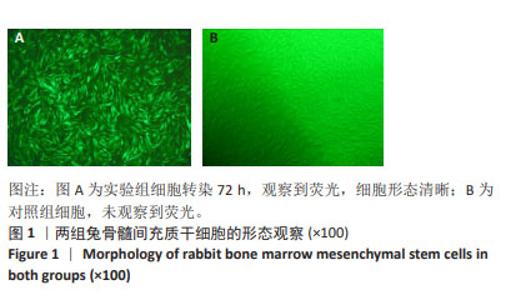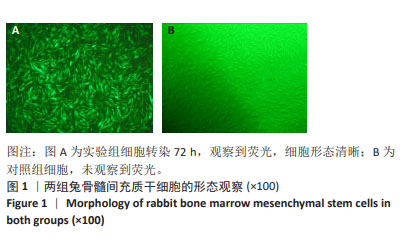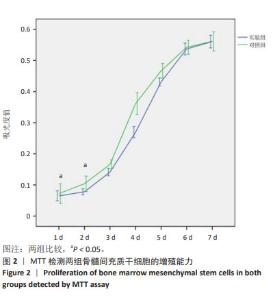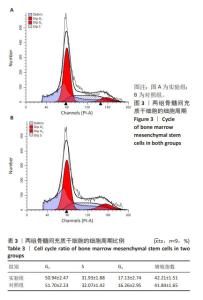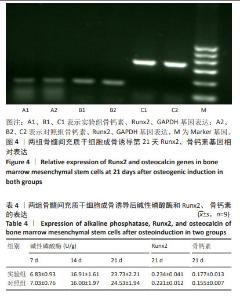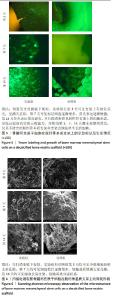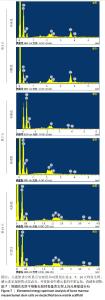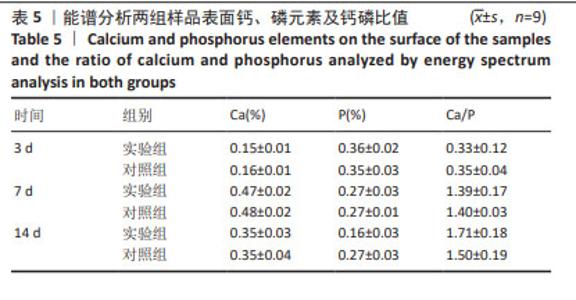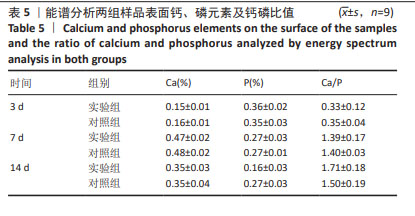[1] SIVAKUMAR PM, YETISGIN AA, DEMIR E, et al. Polysaccharide-bioceramic composites for bone tissue engineering: A review. Int J Biol Macromol. 2023;250:126237.
[2] 宁寅宽,刘林志,陈贤平,等.BMP2重组慢病毒转染兔BMSCs黏附DBM支架的生物矿化研究[J].中国骨质疏松杂志,2023,29(4): 497-502.
[3] LI X, LE Y, ZHANG Z, et al. Viral Vector-Based Gene Therapy. Int J Mol Sci. 2023;24(9):7736.
[4] YANG Y, FAN S, WEBB JA, et al. Electrochemical fluorescence switching of enhanced green fluorescent protein. Biosens Bioelectron. 2023; 237:115467.
[5] 武成聪,荣树,任静,等.腺病毒介导增强型绿色荧光蛋白基因转染兔骨髓间充质干细胞的效率及毒性[J].中国组织工程研究,2018, 22(17):2650-2655.
[6] GONZALEZ-VILCHIS RA, PIEDRA-RAMIREZ A, PATIÑO-MORALES CC, et al. Sources, Characteristics, and Therapeutic Applications of Mesenchymal Cells in Tissue Engineering. Tissue Eng Regen Med. 2022;19(2): 325-361.
[7] 李诗鹏,李强,石正松,等.基因重组腺病毒载体与慢病毒载体转染兔骨髓间充质干细胞的对比[J].中国组织工程研究,2017, 21(9):1340-1345.
[8] CAI Z, ZHANG L, ZHANG L, et al. Construction of Tissue-engineered Cartilage In Vivo from Microtia Chondrocytes After Transfection with Human VEGF165 Genes Mediated by a Recombinant Adeno-Associated Viral Vector. Aesthetic Plast Surg. 2022;46(5):2539-2547.
[9] KONG J, WANG Y, QI W, et al. Green fluorescent protein inspired fluorophores. Adv Colloid Interface Sci. 2020;285:102286.
[10] AZADPOUR B, AHARIPOUR N, PARYAB A, et al. Magnetically-assisted viral transduction (magnetofection) medical applications: An update. Biomater Adv. 2023;154:213657.
[11] LIU S. Lentiviral Production Platform. Methods Mol Biol. 2024;2766: 163-168.
[12] ZHANG P, DONG J, FAN X, et al. Characterization of mesenchymal stem cells in human fetal bone marrow by single-cell transcriptomic and functional analysis. Signal Transduct Target Ther. 2023;8(1):126.
[13] JAMASBI E, HAMELIAN M, HOSSAIN MA, et al. The cell cycle, cancer development and therapy. Mol Biol Rep. 2022;49(11):10875-10883.
[14] ZHA K, TIAN Y, PANAYI AC, et al. Recent Advances in Enhancement Strategies for Osteogenic Differentiation of Mesenchymal Stem Cells in Bone Tissue Engineering. Front Cell Dev Biol. 2022;10:824812.
[15] BULCHA JT, WANG Y, MA H, et al. Viral vector platforms within the gene therapy landscape. Signal Transduct Target Ther. 2021;6(1):53.
[16] HOANG DM, PHAM PT, BACH TQ, et al. Stem cell-based therapy for human diseases. Signal Transduct Target Ther. 2022;7(1):272.
[17] LIU C, YANG ZX, ZHOU SQ, et al. Overexpression of vascular endothelial growth factor enhances the neuroprotective effects of bone marrow mesenchymal stem cell transplantation in ischemic stroke. Neural Regen Res. 2023;18(6):1286-1292.
[18] XU Y, JIANG Y, XIA C, et al. Stem cell therapy for osteonecrosis of femoral head: Opportunities and challenges. Regen Ther. 2020;15: 295-304.
[19] GAO Q, LIU J, WANG M, et al. Biomaterials regulates BMSCs differentiation via mechanical microenvironment. Biomater Adv. 2024;157:213738.
[20] YU X, LIU S, CHEN X, et al. Calcitonin gene related peptide gene-modified rat bone mesenchymal stem cells are effective seed cells in tissue engineering to repair skull defects. Histol Histopathol. 2019; 34(11):1229-1241.
[21] SUN J, LYU J, XING F, et al. A biphasic, demineralized, and Decellularized allograft bone-hydrogel scaffold with a cell-based BMP-7 delivery system for osteochondral defect regeneration. J Biomed Mater Res A. 2020;108(9):1909-1921.
[22] HE T, WANG Y, WANG R, et al. Fibrous topology promoted pBMP2-activated matrix on titanium implants boost osseointegration. Regen Biomater. 2023;11:rbad111.
[23] 马跃刚,李强,陶旋,等.慢病毒介导骨形态发生蛋白2和血管内皮生长因子165双基因转染骨髓间充质干细胞复合脱钙松质骨治疗兔股骨头坏死[J].中国组织工程研究,2019,23(33):5275-5280.
[24] DAUPHIN Y. A Brief History of Biomineralization Studies. ACS Biomater Sci Eng. 2023;9(4):1774-1790.
[25] SHARMA V, SRINIVASAN A, NIKOLAJEFF F, et al. Biomineralization process in hard tissues: The interaction complexity within protein and inorganic counterparts. Acta Biomater. 2021;120:20-37.
[26] YAN X, ZHANG Q, MA X, et al. The mechanism of biomineralization: Progress in mineralization from intracellular generation to extracellular deposition. Jpn Dent Sci Rev. 2023; 59:181-190.
[27] SHI H, ZHOU K, WANG M, et al. Integrating physicomechanical and biological strategies for BTE: biomaterials-induced osteogenic differentiation of MSCs. Theranostics. 2023;13(10):3245-3275.
[28] YU L, WEI M. Biomineralization of Collagen-Based Materials for Hard Tissue Repair. Int J Mol Sci. 2021;22(2):944.
[29] INDURKAR A, CHOUDHARY R, RUBENIS K, et al. Role of carboxylic organic molecules in interfibrillar collagen mineralization. Front Bioeng Biotechnol. 2023;11:1150037.
[30] KITAURA H, MARAHLEH A, OHORI F, et al. Osteocyte-Related Cytokines Regulate Osteoclast Formation and Bone Resorption. Int J Mol Sci. 2020;21(14):5169. |
